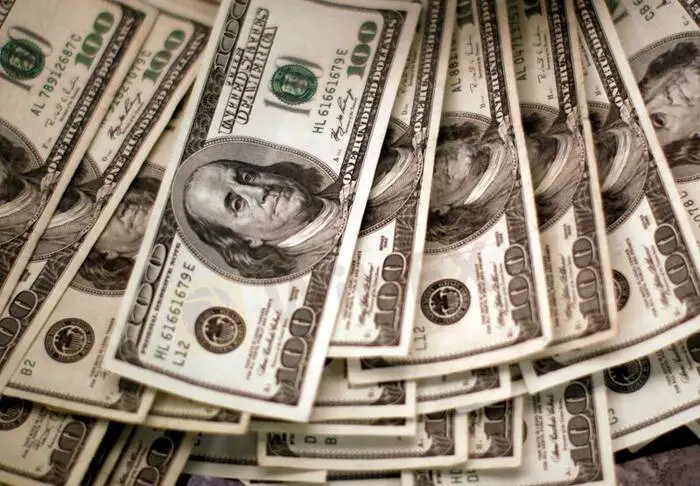简体中文
繁體中文
English
Pусский
日本語
ภาษาไทย
Tiếng Việt
Bahasa Indonesia
Español
हिन्दी
Filippiiniläinen
Français
Deutsch
Português
Türkçe
한국어
العربية
Dollar restrained by risk revival, spread of rate speculation
Abstract:The dollar was carrying a couple of bruises on Wednesday as Federal Reserve officials played down the chance of a half point rate hike in March and a rally in global equity markets tarnished some of its safe haven allure.

Stellar results from Alphabet after the bell saw that stock surge 7% and lift Wall Street futures, benefiting risk sensitive currencies including the Australian and New Zealand dollars.
The euro looked steadier at $1.1270, having risen 0.3% overnight and further away from last weeks 20-month trough at $1.1122. A break above $1.2300 resistance would help counter the recent bearish trend.
The dollar was back at 114.70 yen, after dropping 0.4% overnight and away from last weeks top at 115.68 which now marks major resistance. Still, it remains comfortably above key support around 113.47.
Reflecting that pullback, the dollar index eased to 96.272 and off its recent 19-month high of 97.441.
The euro got a lift from rising EU yields, with German 10-year yields hitting their highest since mid-2019 after lofty inflation readings stoked speculation the European Central Bank might have to tighten early.
“A surprisingly high inflation print in Germany has driven another leg up in euro-zone rate expectations, and while we dont expect a major shift at the ECB policy meeting on Thursday, the direction of travel appears clear,” said Jonas Goltermann, a senior market economist at Capital Economics.
Likewise, British 10-year yields reached levels last seen in early 2019 ahead of an expected rate hike from the Bank of England this week.
That saw the pound push up at $1.3522 after three sessions of gains.
All this means the Fed is not the only hawkish central bank in town, restraining the dollar. Indeed, Fed officials have been pushing back against market talk they might hike by 50 basis points in March.
St. Louis Fed President James Bullard, a noted hawk, on Tuesday said he would argue for rate rises in March, May and June, but did not favour a half-point move.
Capital Economics Goltermann argued the market was still underestimating how high U.S. rate would have to go to rein in inflation.
Fed fund futures imply a peak around 1.75-2.0% which would be very low by historical standards and would likely still leave real rates in negative territory.

Disclaimer:
The views in this article only represent the author's personal views, and do not constitute investment advice on this platform. This platform does not guarantee the accuracy, completeness and timeliness of the information in the article, and will not be liable for any loss caused by the use of or reliance on the information in the article.
Read more

Using Trendlines in Technical Analysis
Trendlines are a cornerstone of technical analysis, offering traders a visual guide to understanding market movements. By connecting specific price points, such as higher lows in an uptrend or lower highs in a downtrend, trendlines define the market’s trajectory.

What Really Drives Oil Prices?
For investors, fluctuations in oil prices represent both opportunities and risks. Understanding the factors behind these price changes can help investors make more informed investment decisions.

Mastering Support and Resistance in Forex Trading Success
Know why support and resistance levels are crucial in Forex trading, the best tools to identify them, and how they impact trading success.

Hidden Forex Fees That Can Drain Your Profits
Many traders focus on profits when entering the forex market. However, the costs of trading can silently eat into those profits. Brokers often advertise low fees and tight spreads, but hidden costs can add up. Understanding these fees is crucial for managing your trading expenses.
WikiFX Broker
Latest News
Top Regulated Forex Brokers with Prop Trading Options
Forex Regulators Around the World: Who’s the Strictest?
What Happens When a Broker Goes Bankrupt?
Woman Scammed Out of RM200,000 in Investment Fraud
XS.com Launches AI Insights to Transform Trading Behavior
Why Do Some Brokers Block Your Withdrawals?
FCA Cautions Against ALT-COINFX
Unlocking the Secrets of Prop Trading: How to Succeed in Proprietary Trading Firms
Tether’s $13B Profits in 2024 Amid UK Regulatory Scrutiny
Philippine Authorities Bust Manila Online Scam Farm, Arrest 100
Currency Calculator






